Highlights
- In summer 2021, the Sport Information Resource Centre launched the Community Activation Grants program to help sport organizations promote Safe Sport and concussion initiatives at the community level.
- This article spotlights 6 of the 25 successful grant recipients from across Canada. These recipients share why Safe Sport and concussion awareness initiatives are crucial for their community, and how they plan to put the grants to use.
- Featured grant recipients include Pickleball Hamilton, Soccability Canada, Freestyle BC, Edmonton North Zone Soccer Association, the Castaway Wanderers Rugby Football Club, and the Ottawa Sport Council.
- Successful grant recipients share unique ideas on how to get started and advance existing Safe Sport and concussion awareness initiatives.
In May 2021, the Sport Information Resource Centre (SIRC) announced the launch of its Community Activation Grants. This program supports sport organizations in developing and disseminating concussion and Safe Sport resources in Canadian communities.
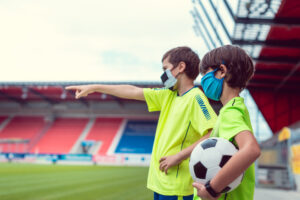
The launch was set against the backdrop of the Government of Canada’s commitment to reactivate local sport organizations, after the COVID‑19 pandemic’s devastating financial, social and health-related effects. In its 2021 federal budget, the government allocated $80 million over 2 years to support local sport organizations.
One issue that’s been at the forefront for sport organizations during the pandemic has been ensuring a Safe Sport environment as participants return to play. With the Safe Sport movement growing rapidly at the national and provincial levels, the Community Activation Grants are aimed at further growing the movement in local sport communities.
Successful applicants each received a grant of up to $5,000 and access to SIRC’s evidence-based resources. With SIRC’s support, grant recipients are championing resources that promote concussion awareness and safety in sport at a time when Canadians are returning to play.
We spoke with 6 grant recipients about the importance of Safe Sport and concussion awareness for their organizations, and about the initiatives their grants helped them build. Learn more about how Pickleball Hamilton, Soccability Canada, Freestyle BC, the Edmonton North Zone Soccer Association, the Castaway Wanderers Rugby Football Club and the Ottawa Sport Council are activating Safe Sport in their communities. They also share how you can jumpstart Safe Sport and concussion awareness in your community.
Spotlight 1: Pickleball Hamilton
Pickleball is a relatively new and rapidly growing sport with Pickleball Canada only having been incorporated within the last 10 years.
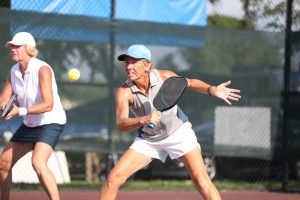 In 2020, a Pickleball Hamilton member fell while playing pickleball. While undergoing testing to diagnose a suspected concussion, an MRI revealed an undetected cancerous tumour that could have been life threatening. But it wasn’t just the tumour that came as a surprise. As a non-contact sport, concussions aren’t typically top of mind for pickleball players.
In 2020, a Pickleball Hamilton member fell while playing pickleball. While undergoing testing to diagnose a suspected concussion, an MRI revealed an undetected cancerous tumour that could have been life threatening. But it wasn’t just the tumour that came as a surprise. As a non-contact sport, concussions aren’t typically top of mind for pickleball players.
“This incident heightened our club’s awareness of concussion in the sport, but also revealed a knowledge gap among members and the wider pickleball community that needs to be filled,” says Matt Cunningham, Director of the Pickleball Hamilton Association.
That’s why receiving this grant and its timing was so important for Pickleball Hamilton.
“Thanks to the grant, we’re embarking upon a concussion prevention and awareness campaign that’ll both inform and protect our members,” he says.
The grant is supporting the creation of 6 short videos, each demonstrating real, on-court errors that could lead to concussions and about how to prevent them. Pickleball Hamilton already completed 2 of the videos, demonstrating how to safely retrieve a lob when playing singles and how to retrieve one when playing doubles.
“These videos are being talked about within our membership. That’s an early success that wouldn’t have been realized without the Community Activation Grant,” says Cunningham.
The videos will also complement concussion awareness posters to be displayed prominently at courts in the Hamilton area.
Using SIRC’s concussion resources, Pickleball Hamilton is working on its concussion policy and protocols. As a newer racquet sport with work to be done on concussion awareness and education, it’s leading the way at the community level.
Spotlight 2: Soccability Canada
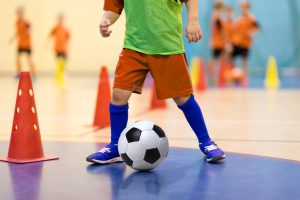 Like Pickleball Hamilton, receiving the Community Activation Grant was a big first step for Soccability Canada. Spanning the country, Soccability provides accessible soccer programs for children and youth with disabilities. Officially incorporated as a not-for-profit organization in November 2020, Soccability is excited to use the grant to launch its concussion policies and initiatives.
Like Pickleball Hamilton, receiving the Community Activation Grant was a big first step for Soccability Canada. Spanning the country, Soccability provides accessible soccer programs for children and youth with disabilities. Officially incorporated as a not-for-profit organization in November 2020, Soccability is excited to use the grant to launch its concussion policies and initiatives.
“Receiving the grant was especially meaningful because of the recognition it provides to the organization, to Para sport and to Para sport concussion research,” says Matt Greenwood, Soccability Canada’s Program Director.
He discussed the lag in concussion research and policy for Para sport. Until recently, the International Concussion in Sport (CIS) consensus papers lacked the research necessary to address the needs of children and youth with disabilities. For this reason, and to ensure appropriate concussion treatment is provided to Para athletes, a multidisciplinary team of experts created the concussion in Para sport (CIPS) group.
Learn more about concussion in Para sport and the first position statement of the CIPS group in a SIRCuit article led by CIPS member Dr. James Kissick.
The grant provides Soccability with a starting point to consult and gain access to CIPS research experts. Greenwood was particularly enthusiastic about putting new Para sport concussion research into practice through the development of new protocols, educational videos and infographics. These resources will target several different stakeholders in the Soccability community.
“Soccability athletes are often accompanied by companions, which means that concussion initiatives targeting not just the athletes and coaches, but also parents, guardians, family members and companions are also important,” says Greenwood.
Soccability is currently in the design and development phase of many of its concussion and Safe Sport initiatives. Greenwood is excited to have their programs back up and running and is confident that the grant help spread awareness of concussion in their organization. Along with access to SIRC’s resources and new research, the grant is a major asset to growing Soccability and concussion education not only within the organization, but within Para sport more broadly.
Spotlight 3: Freestyle BC
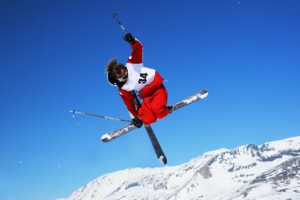 Freestyle BC offers freestyle skiing programs in British Columbia, ranging from a fundamentals program that is designed for skiers as young as 6 years of age to high performance programs that support the best freestyle skiers in Canada to their flagship GirlStylerz program. Given the nature of the sport, freestyle skiing comes with risks that may lead to head injuries and concussions.
Freestyle BC offers freestyle skiing programs in British Columbia, ranging from a fundamentals program that is designed for skiers as young as 6 years of age to high performance programs that support the best freestyle skiers in Canada to their flagship GirlStylerz program. Given the nature of the sport, freestyle skiing comes with risks that may lead to head injuries and concussions.
According to Executive Director Josh Dueck, Freestyle BC’s goal is to “create a barrier-free environment for all athletes to feel safe, welcome and included.” The funds from the grant are allowing Freestyle BC to continue its path to this goal and enhance their existing suite of services and resources.
Specifically, the grant has given the organization the capacity to work with experts of concussion, biomechanics, and mental health. In turn, Freestyle BC has refined its resources for athletes, coaches, and parents and guardians. The grant also supported access to experts in web design and communication who’ve helped Freestyle BC share this information in the most effective way with all members.
“We’re working on 5 critical resources for our community to draw upon to ensure our vision is achieved. No pillar in our commitment to Safe Sport stands alone, and each pillar needs to be guided and supported by experts,” says Dueck.
Once the materials for each of the pillars are in place, he says the plan is to “take full advantage of a captive audience at the annual general meeting in September.” They’ll summarize what’s available and expected as they shift Freestyle BC’s culture toward that of Safe Sport.
Overall, the grant has provided Freestyle BC with a launching pad to activate its concussion and Safe Sport initiatives. The funding has also helped to ensure that member clubs are in the best position to deliver safe, meaningful, and inclusive programs in the upcoming winter.
Spotlight 4: Edmonton North Zone Soccer Association
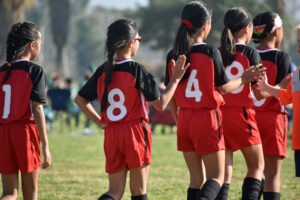 As part of the Edmonton Minor Soccer Association (EMSA), the Edmonton North Zone Soccer Association (EMSA North) is working toward achieving the national standards for Safe Sport outlined by Canada Soccer. Like most sport organizations, the pandemic halted EMSA North’s programs, requiring the organization to rethink how it operates.
As part of the Edmonton Minor Soccer Association (EMSA), the Edmonton North Zone Soccer Association (EMSA North) is working toward achieving the national standards for Safe Sport outlined by Canada Soccer. Like most sport organizations, the pandemic halted EMSA North’s programs, requiring the organization to rethink how it operates.
“As we moved to re-opening, we really did a focused shift to try and provide a safe return and much of that includes education, particularly starting at the coaching level,” says Kylee Webster, Executive Director of EMSA North.
To support a safe return to play, the association is working with its governing body to obtain club licensing.
“Club licensing means we meet the National Standards of Quality for soccer, and we’re able to deliver a carefully thought-out program with highly trained volunteers,” says Webster.
The grant supports the licensing, which will focus on coach education. In particular, the grant will fund courses on concussion awareness, respect in sport, and making ethical decisions. It will also pay for the training of more than 150 coaches in the association.
“We’re focusing on coach training at this time because we feel this is the quickest stream to assist our association in a safe return to sport,” says Webster. “Coaches are on the field with players. They communicate directly with parents. That knowledge transfer is paramount to fostering a safe program.”
The association is buying course keys and will distribute them to cover the expenses for non-trained head coaches to further their education. In the meantime, EMSA North is using its social media platforms and newsletters to publish awareness posts, answer questions and provide information to coaches.
“Great resources have already been provided to [us] from SIRC concerning information and promotion of Safe Sport. We have and we will continue to use as many of these resources as possible to promote coach education and player education,” she says.
Spotlight 5: Castaway Wanderers Rugby Football Club
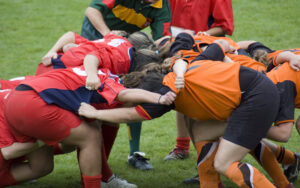 Concussion education and awareness are typically top priority in sports like rugby, where contact isn’t just inevitable, but a main element of the game. For this reason, clubs like the Castaway Wanderers (CW) in Victoria, British Columbia, are developing and promoting concussion and Safe Sport initiatives.
Concussion education and awareness are typically top priority in sports like rugby, where contact isn’t just inevitable, but a main element of the game. For this reason, clubs like the Castaway Wanderers (CW) in Victoria, British Columbia, are developing and promoting concussion and Safe Sport initiatives.
But after a lengthy stint away from the game because of COVID‑19, athletes must be reintroduced to effective techniques for preventing injuries during contact. This is a new challenge for sports like rugby.
“The ability to help athletes return to play in a safe manner is paramount for what we’re trying to do,” says David Hill, CW’s Mini Rugby Program Coordinator. “I think when you’ve players that haven’t had [any contact] for 15 months, if not more, it’s going to be challenging.”
While concussion initiatives have always been a part of CW Rugby, the SIRC grant will fund a new, post-pandemic era of return-to-contact campaigns. One such campaign is what Hill calls the “3 Ts.”
The first T is for “Tell.” Concussion symptoms may be more easily hidden than other injuries. So, athletes might keep quiet about a head injury if, for example, they fear they’ll be removed from play. That’s why spreading awareness about the importance of speaking up and encouraging athletes to tell someone is the first step.
“If you’re not telling at least your coach that you suspect a head injury, then you’re putting not only yourself at risk, but maybe some others at risk,” says Hill.
The second T is for “Teach.” For this component, CW focuses on how they’ll teach return to contact. This includes purchasing equipment, such as tackle bags, to teach contact technique while limiting human-to-human contact, according to Hill. CW Rugby also plans to host a Safe Sport and return to contact professional development session with coaches before the fall season starts.
The third T is for “Track.” Knowing players’ concussion history is important for decision-making. However, currently, there’s no system in place at CW Rugby for tracking this information. Some funds from the grant will be put toward a tracking system.
“It’s important from a club perspective that we set up something, so we know who’s sustained concussions over a period of time and so that we’re better informed,” says Hill.
Spotlight 6: Ottawa Sport Council
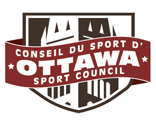 The Ottawa Sport Council (OSC) supports more than 750 community sport organizations in Ottawa. Through education, advocacy, and philanthropy, it strives to foster quality sport experiences at the community level. But, as Executive Director Marcia Morris states, education is perhaps its biggest task.
The Ottawa Sport Council (OSC) supports more than 750 community sport organizations in Ottawa. Through education, advocacy, and philanthropy, it strives to foster quality sport experiences at the community level. But, as Executive Director Marcia Morris states, education is perhaps its biggest task.
“At the end of the day, funding for community sport often gets forgotten in all the initiatives that get rolled out from Sport Canada,” says Morris. “So, we’re really interested in the grant to help promote SIRC’s resources, but also to amplify the work that we’re doing and have already done, and pull it all together to make community sport safer.”
Prior to the pandemic, OSC had major concussion education programs and resources ready to roll out. However, with minimal in-person sport activity over the past year, the focus became finding new ways of dispersing information to those who need it.
One outcome of the OSC’s “pandemic pivot” was its successful Concussion Education Initiative video. Another is its online Safe Sport toolkit. Currently in design, the toolkit is meant to be a user-friendly resource for any sport or organization. It will provide bite-size pieces of information sectioned into different “drawers” (for example, policies, minimum training requirements, and resources). The goal of the toolkit is to ensure that every sport gets the information it needs.
“Some sports weren’t getting any Safe Sport information from their NSO [National Sport Organization], and others are way beyond in their policies. So, everybody’s at a different part of their journey,” says Morris. “The whole point [of the toolkit] is that you can hop in and just look at one drawer. But, all the drawers will be available for the people who don’t have that luxury of being a well-funded, well-defined sport.”
The grant from SIRC is helping to launch the Safe Sport toolkit. It will serve as a major asset for community sport organizations, especially those looking to start or fill in gaps in their concussion and Safe Sport initiatives.
Conclusion
Our conversations with some of SIRC’s Community Activation Grants recipients unearthed stories of resilience, success and innovation within community sport. After the abrupt and extended disruption by the pandemic, the grants provided many recipients with the boost they needed to get their Safe Sport and concussion awareness programs up and running. For others, the grants provided additional capacity and support while pivoting existing initiatives to align with pandemic restrictions.
When we interviewed grant recipients, several also shared suggestions for how other community sport organizations could enhance their Safe Sport and concussion awareness initiatives, or simply get them off the ground. Top tips include:
- Leverage what’s already out there
- Many resources are available to community sport organizations. CW Rugby and OSC often look to the concussion web hubs from the Coaching Association of Canada and SIRC. For clubs like Pickleball Hamilton that are just getting started or revising their protocols, these resources are a great starting point for those organizations wanting to mark themselves as a Safe Sport environment.
- Prioritize having clear organizational Safe Sport and concussion goals
- EMSA North suggests speaking with other sport associations or asking for support from your governing body. If an organization can be clear about its objectives or goals, it can begin to consider how it could achieve them.
- Build 1 brick at a time
- “Building a pyramid is no small task,” says Freestyle BC’s Dueck. “The only way to complete this is by moving 1 brick at a time.” This was done by creating a vision for what Freestyle BC wanted its commitment to Safe Sport to look like, breaking it down into manageable objectives, and then putting the puzzle pieces back together.
- Make local connections
- Local or public health units have tools and resources that may support community sport organizations. These tools and resources can often be tailored to the specific needs of your community. Soccability Canada’s Matt Greenwood explained how his regional public health unit had been an excellent resource for educating players and parents in an earlier stage of its concussion awareness initiatives. Soccability plans to continue to involve public health nurses in future concussion awareness programs.
Aligning with the federal government’s commitment to reactivate local sport organizations as they recover from the COVID‑19 pandemic, SIRC’s Community Activation Grants provided support to community sport organizations moving toward national standards for concussion safety and Safe Sport.
According to David Hill of CW Rugby, fostering Safe Sport environments is a sure bet for enhanced sport performance:
“The biggest thing about sport safety is that it’s a performance enhancer. The safer [an athlete] feels the more they can push the envelope on performance.”
Recommended resources
Learn more about the Community Activation Grant recipients.
Discover SIRC’s concussion in sport resources.
Explore SIRC’s Safe Sport hub.